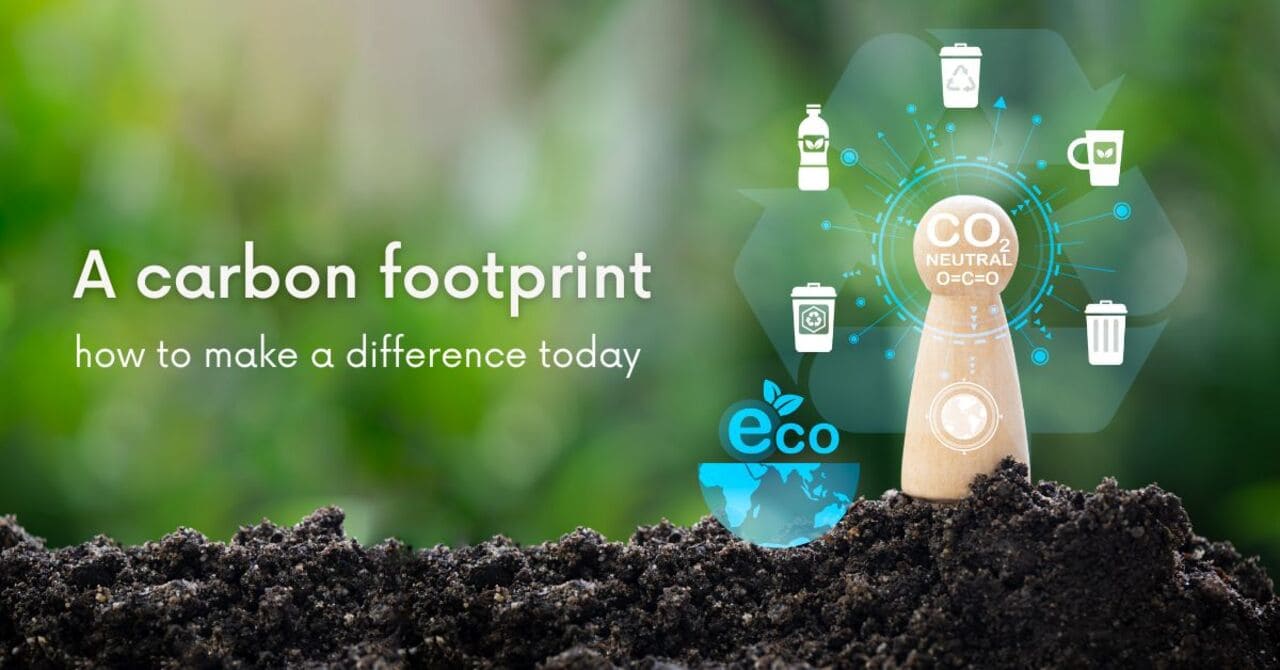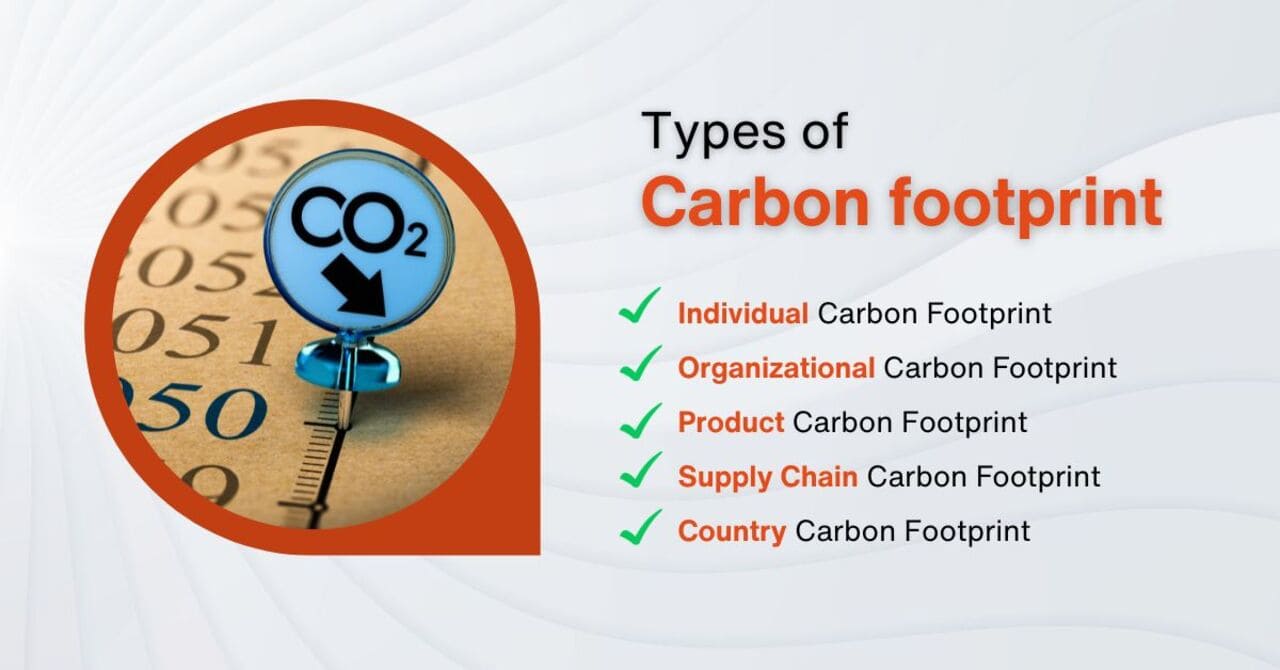A carbon footprint: How to make a difference today

It's surprising to realize that each of us, as individuals, contributes to the emission of carbon dioxide (CO2). This holds true not only on a personal level but also extends to organizations and businesses. By gaining a clear understanding of what a carbon footprint entails and its sources, we can effectively work towards reducing emissions in our everyday operations.
What is a carbon footprint?
A carbon footprint refers to the total amount of greenhouse gas emissions, particularly carbon dioxide (CO2), that are produced directly or indirectly by an individual, organization, product, or event. It is a measure of the impact human activities have on the environment in terms of their contribution to climate change.
Carbon footprints are typically measured in units of carbon dioxide equivalents (CO2e), which take into account the different greenhouse gases and their global warming potential. The main sources of carbon footprint include burning fossil fuels (such as coal, oil, and natural gas) for electricity, transportation, and heating, as well as industrial processes, deforestation, and agricultural practices.
The EPA states that carbon dioxide accounts for 65% of total global greenhouse gas emissions.
Kind of a carbon footprint
There are different types or categories of a carbon footprint, which can help identify and measure specific sources of greenhouse gas emissions. 
- Individual Carbon Footprint: This refers to the greenhouse gas emissions produced by an individual through their activities, such as energy consumption in households, transportation choices, and personal lifestyle habits.
- Organizational Carbon Footprint: Also known as a company carbon footprint, it measures the emissions generated by businesses, institutions, or organizations in their operations, including energy usage, manufacturing processes, transportation, and waste management.
- Product Carbon Footprint: This measures the emissions associated with the lifecycle of a specific product, considering all stages from raw material extraction to production, distribution, use, and disposal. It helps assess the environmental impact of products and identify opportunities for improvement.
- Supply Chain Carbon Footprint: This footprint accounts for the emissions generated throughout the entire supply chain of a product or service. It includes emissions from suppliers, transportation, manufacturing, and distribution, providing insights into the overall environmental impact of the supply chain.
- National or Country Carbon Footprint: This measures the total greenhouse gas emissions produced by a specific country within its geographical boundaries. It helps countries track their emissions, set reduction targets, and evaluate their contribution to global climate change.
Measuring a carbon footprint
Calculating a carbon footprint involves estimating the greenhouse gas emissions associated with various activities or entities. While the specific methods and formulas may vary depending on the scope and level of detail desired, here is a general approach to calculating a carbon footprint:
Identify the scope: in which you are an individual, organization or multinational. Then, listing all the activities relevant included
Collect data: Collect relevant data on energy consumption, transportation, waste generation, and other factors contributing to emissions within the defined scope.
Convert Data to Emissions: Use emission factors or conversion factors to convert the collected data into greenhouse gas emissions.
Calculate Emissions: Multiply the activity or energy use data by the corresponding emission factors to calculate the emissions associated with each specific activity. Sum up these emissions across all relevant activities to obtain the total carbon footprint.
The summary equation: Total carbon footprint = Data of emissions x emission factors
Consider Offsets and Mitigation: Assess opportunities for emission reductions or offsets.
Regular Monitoring and Updates: Carbon footprints can change over time due to factors like operational changes, new data availability, or updated emission factors.
How to reduce carbon footprint
Cut-off energy electronics when not in use: unplug electronics, and optimize heating and cooling in our home.
Installing solar panels helps to decrease reliance on fossil fuel-based electricity generation.
Switching to use public transport such as carpooling, biking, walking, or using public transportation
Making wise choices: To reduce your carbon footprint, opt for plant-based meals and prioritize locally sourced food to lower your overall carbon footprint.
Educating yourself and encouraging others: sharing knowledge with friends, family, and your community to raise awareness about the importance of reducing carbon footprints. Encourage others to adopt sustainable practices as well.
>>>Learn more: What is your company carbon footprint - How to calculate it?
Bio-based plastics manufacturer
AirX stands out as a brand that goes beyond carbon neutrality by actively removing more carbon dioxide from the atmosphere than it generates. By manufacturing carbon-negative products, AirX demonstrates a commitment to environmental sustainability and offers a solution for reducing carbon emissions associated with traditional products. Our carbon-negative approach sets them apart in the market and showcases our dedication to combating climate change. 
AirX has gained recognition from consumers and industry professionals for its innovative approach to creating sustainable products. The company has partnered with many global corporations such as Paula’s Choice, Roche, Porsche, and more.
Aside from their commitment to sustainability, AirX also values innovation and technology. They constantly invest in research and development to create new and improved products that are both sustainable and technologically advanced.
Contact us
AirXis the world’s first carbon-negative bio-material made from coffee grounds manufacturer.
We specialize in producing bio-based composites using recycled carbohydrates derived from by-products such as coffee grounds, coconut husk, husk, and bamboo. Our goal is to promote sustainability through the use of eco-friendly materials.
We are always here to help and provide the best service possible. If you have any questions or would like to receive advice and feedback directly from our sales staff, please do not hesitate to contact us. You can reach us through:
- Whatsapp: +84 969 742 950
- Email: [email protected]
We look forward to hearing from you!

